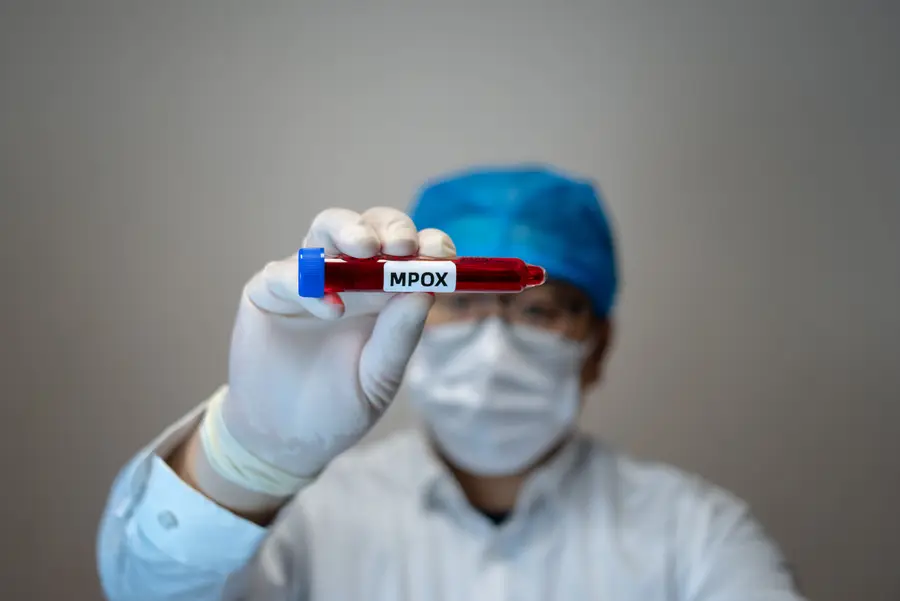Insights
2022 Mpox Outbreak: Unanswered Questions from a Global Outbreak
How Mpox Affected the World in 2022
In May 2022, mpox (monkeypox) burst onto the global scene following an initial outbreak in Spain which rapidly spread in Europe, the U.S., and Canada. As more and more countries reported cases and the virus consumed global headlines, an all-too-familiar anxiety emerged; the public, already weary of the COVID-19 pandemic, was jolted by news of a new infection with a frightening name and graphic symptoms, reminiscent of diseases long since conquered. Over the last six months, much has been learned about this virus and as the outbreaks in the Global North waned, so has global attention—continuing the dangerous cycle of panic and neglect and highlighting the pervasive inequities in global pandemic preparedness and response systems.
Although 2022 is in our rear view, it is important to continue to review what happened, what did not happen, and what could have happened following these outbreaks. Overall, the public health response in the U.S., Canada, and many European countries left much to be desired and provides an important reality check considering lessons learned from the COVID-19 pandemic.
Learning from Previous Mpox Outbreaks to Prevent the Next Pandemic
Looking ahead to the next multi-country mpox outbreak, it’s important to take stock of what the global community has learned about mpox, where the response to mpox continues to fail, and what this tells us about the likely future failures. It’s easy to forget that we’ve had almost 50 years to learn about mpox (in stark contrast to the novel coronavirus when it emerged) and yet the global health community was largely unprepared for its recent spread. In fact, multiple mpox outbreaks have occurred over the last several decades, mostly due to spillover from wildlife to humans through hunting.
In Nigeria for example, where the current outbreak is likely to have started, new cases have occurred every year since 2017, with the most cases occurring in 2022. Last year, 750 cases were reported, which is 22 times more cases than 2021. It is likely that this number of cases is a vast undercount, due to limited available testing capacity within the country’s health care system.
Following the 2022 outbreak in areas of the Global North, a massive effort was made to expand availability of existing smallpox vaccines, which is known to be protective against mpox. However, no significant effort was made to make vaccines available to countries where mpox has persisted for years, like in Nigeria, and where cases continue to rise. In fact, “vaccine hoarding” from rich countries and price increases linked to the increase in global demand put the existing vaccines further out of reach for many countries in the Global South.
Examples like Nigeria demonstrate that if we continue to ignore outbreaks that “only” threaten poor communities, we will have many more dangerous outbreaks that reach global scale.
Our global systems for health emergencies such as COVID-19 and mpox are still alarmingly weak, are geared to protect the wealthy economies of the Global North, and are plagued by structural blind spots that make it difficult to fully absorb—and act on—the lessons we must learn if we want to prevent or mitigate the next epidemic, let alone pandemic.
Enacting Responsive Pandemic Preparedness Systems
Addressing the persistent mpox epidemic would be an important way to test whether we are capable of enacting truly effective and responsive pandemic preparedness systems. To do that, we need to identify and target the remaining essential gaps in our understanding of the disease—and simultaneously critically examine why we still know as little as we do.
So, what questions should the global health community be asking?
The first set of questions is simple How many mpox cases are there? Who is getting infected, under what circumstances, and how many people have died?
There are estimates, but we know that the current number of confirmed cases are underreported due to the lack of robust and wide-spread testing. Without this data—and without agreement from governments and global donors to support a stronger emphasis on testing and surveillance, including leveraging the laboratory capacity reinforced across the African continent during the COVID-19 pandemic—our understanding of the virus, the patterns of transmission, and reason it spread in 2022 will remain limited, making it harder to predict when another global outbreak might occur.
World Health Organization data showed that the number of reported cases decreased drastically during the last months of 2022. However, data about reported cases are only reliable in those countries with health systems able to perform wide-spread testing. Testing for mpox, as for many other diseases, is quite challenging in low-and middle-income countries (LMICs). For example, in December 2022, a combined total of approximately 1,350 confirmed cases were reported in LMICs (i.e., 88 cases in Africa and 1,265 case in Latin America), accounting for nearly 78% of the global reported cases. However, the lack of infrastructure and funding to sustain a working surveillance system do not paint a full picture of the number of cases in LMICs. In many countries where testing is limited or not available, there is also a lack of access to vaccines, with contact tracing and isolation the only available interventions.
How are communities and individuals experiencing mpox in endemic countries?
The 2022 multi-country outbreak centered around sexual networks outside of Africa, but transmission dynamics are more complex in countries where cases have increased steadily over the last several years. Mpox cases in countries like Nigeria occur with more frequency among women and children and more work needs to be done to understand how communities are exposed to and experience mpox.
In addition to understanding how many cases occur and their context, more information is needed on transmission dynamics and the lived experience of individuals and communities impacted. Research—ideally, designed and led by teams in affected countries—should aim to shed more light on the profiles of people getting infected, especially person-to-person transmission chains. Research should examine how severe mpox infections are, who is responsible for care, what the longer-term effects of mpox infections are, and what the impacts and tradeoffs have been in the local health systems.
Why did mpox emerge outside of West Africa?
Neglect was a key factor. On some level, it was only a matter of time for mpox to spread globally.
More sustained, focused surveillance research is needed to gain answers about the animal reservoir (where the virus is thriving within animals), linkages between the environment and animal-human exposure, and impact of the current food crisis on bush meat handling and consumption, to name a few.
What is needed to better address outbreaks at their source?
In short, country led research agendas are needed to answer the above questions.
An integrated focus on emerging infections—rather than letting diseases become endemic—is also critical. Even understanding what a word like endemic means in this context and why it is used, needs to be a part of the global community’s approach to addressing outbreaks at their source. Changing how we talk about these diseases is important because it impacts public perceptions and influences funding and supply of vital tools for response.
Another need is the ability to leverage all public health platforms for the needs of a country and not just to respond to a funding allocation made by a donor.
Like we’ve seen with COVID-19, making existing tools—including vaccines, treatment drugs, and diagnostics—available to those who need them and not just those who lobby for them is an important step towards stronger outbreak response, and broader global health equity.
What do potential mpox outbreaks put at stake?
The lives and wellbeing of everyone are interconnected and the global health community has a responsibility to use science, systems, and supplies to protect everyone who is at risk.
Urgency of the moment needs to be maintained. We have not seen all that could happen with this outbreak. While global attention on mpox has waned, the disease has affected over 85,000 people. Health systems need to be prepared for the outbreak that could happen, not the one that happened previously.
We recommend a robust, long-term effort by high income countries to work with mpox-affected LMICs to develop solutions that provide resilience across their health systems. Global health security cannot continue to be characterized by the same fundamental inequities—in global health platforms, funding, and prioritizations—as what we have experienced in dealing with epidemic and pandemic disease outbreaks of the past. We need to address the cost-benefit paradigm of us-vs-them.
We do not know where the next serious global health threat will emerge but, in an interconnected world, the risk of global impact is high. We are all stronger and safer when communities can mitigate the risk of spillover of a dangerous new pathogen. To do that effectively, countries need to prepare for these unforeseen crises by building strong health systems capable of detecting and responding quickly to these disease outbreaks. We also need to be honest and humble about what it takes to get there.
Learn more about our global health security work.
Disclaimer: This piece was written by Alisha Smith-Arthur (Director, Public Health Preparedness and Global Health Security), Donal Bisanzio (Senior Epidemiologist), and Gabriella Corrigan (Senior Specialist, Global Health Security ) to share perspectives on a topic of interest. Expression of opinions within are those of the author or authors.



